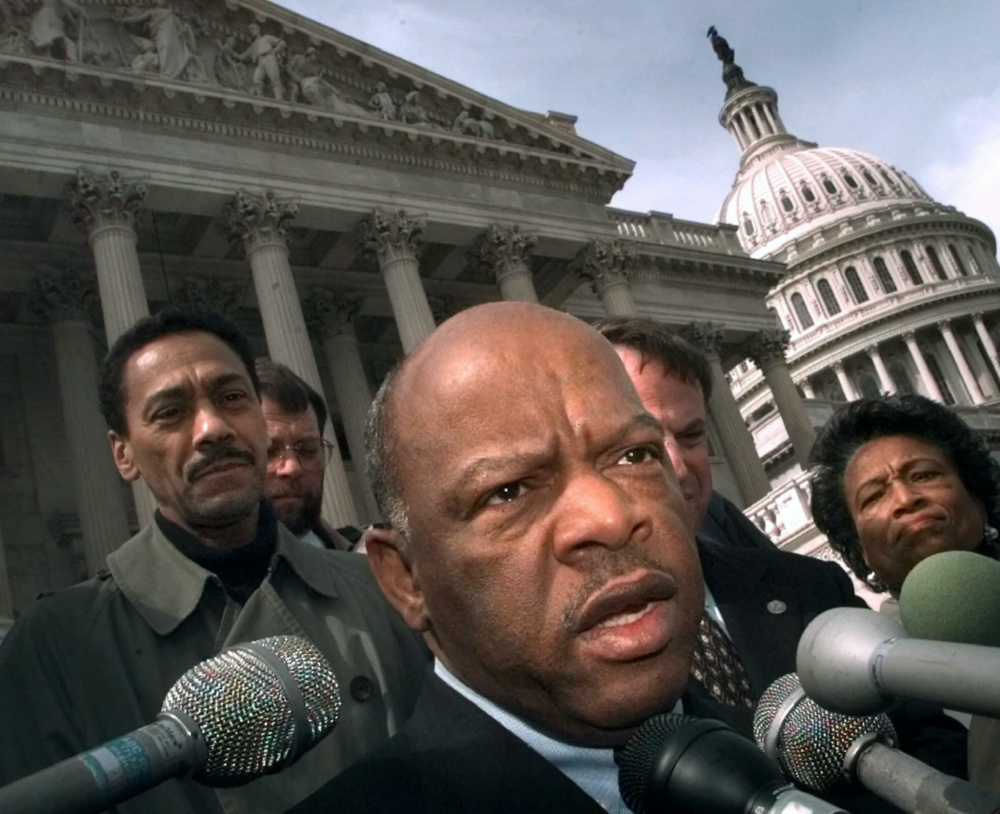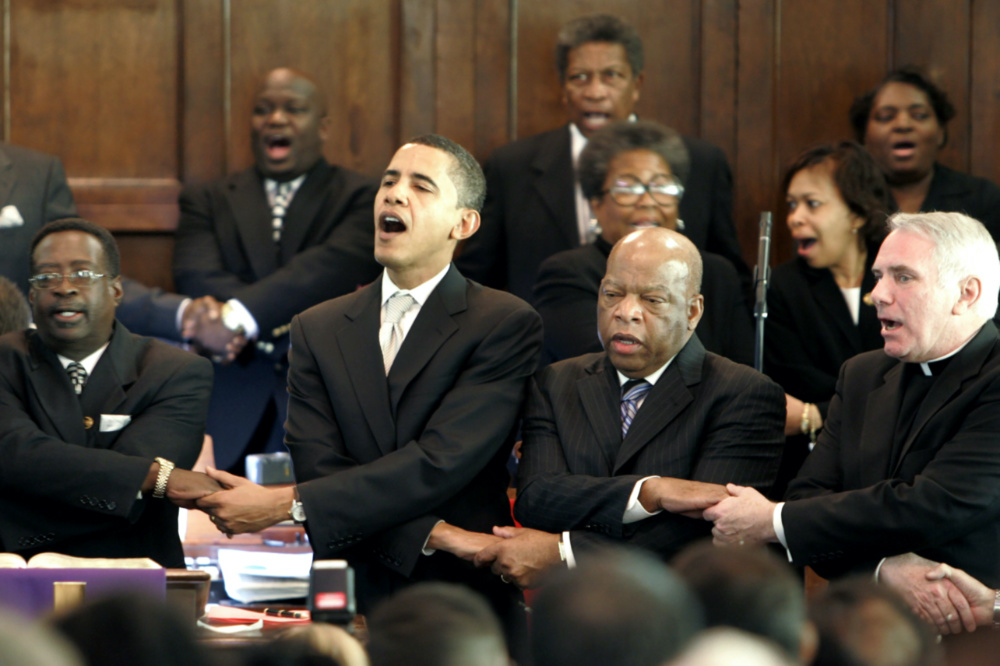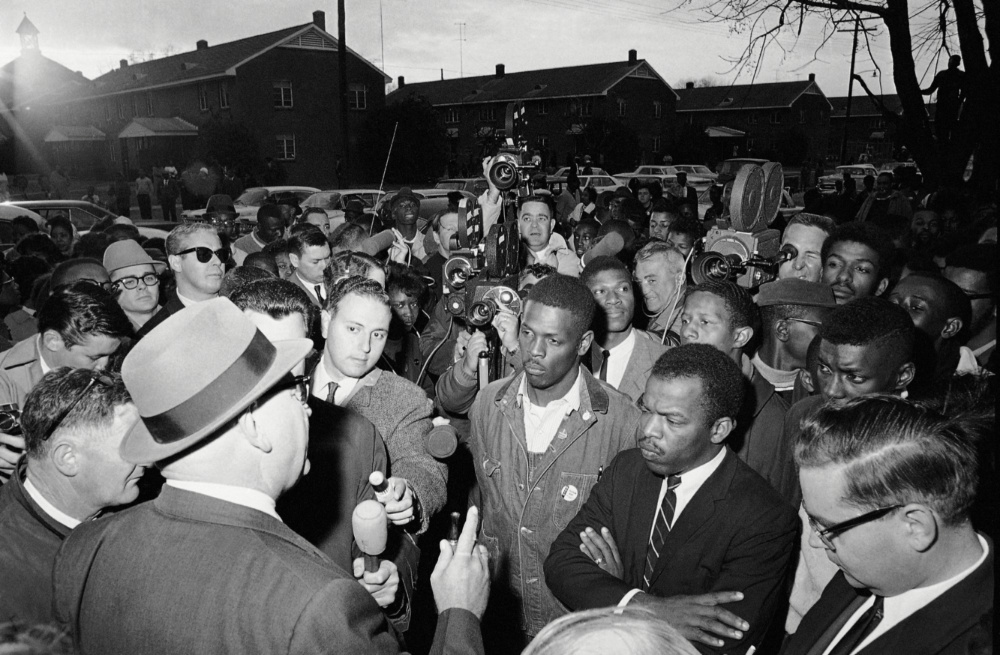Birmingham, Alabama, US
AP
From his childhood, when he preached to chickens in the dirt-poor South, to his decades as a moral force in Congress, religious faith was a constant in the life of Representative John Lewis.
Lewis spent boyhood days as a make-believe minister, preaching to a congregation of clucking birds at his rural home in Alabama. As a teen, inspired by the oratory and leadership of the Rev Martin Luther King, Jr, he went on to become a civil rights activist in his own right while attending a Baptist college in Tennessee. Like the earliest evangelists of Christianity, he was beaten and jailed for speaking out when others were silent.
In later years, as an elder member of the US House, Lewis advocated for both justice and reconciliation. Returning to a tactic he first learned nearly 60 years earlier, Lewis led a sit-in on the House floor in 2016 to protest the failure of gun-control measures.

US Representative John Lewis, D-Ga., speaks with reporters in Washington on 5th March, 1999. Lewis, who carried the struggle against racial discrimination from Southern battlegrounds of the 1960s to the halls of Congress, died Friday, 17th July, 2020. PICTURE: AP Photo/Khue Bui/File photo.
Despite memories that sometimes brought him to tears, and defying the diminishing strength that came with advancing age, Lewis for years led annual pilgrimages to the Deep South for fellow members of Congress seeking to both honor the legacy of the civil rights movement and push it in new directions.
“He is the reason I come,” House Majority Leader Steny Hoyer, a longtime participant in the pilgrimages, said of Lewis during the 2019 tour, sponsored by the Faith and Politics Institute in Washington.
Born in 1940, Lewis grew up near Troy, Alabama, at a time when racial segregation was the law and ministers were typically leading members of the Black community. Since his sharecropper family lived in a state run by and for white people, Lewis had virtually no Black political leaders to emulate as a role model.
So, as Lewis often recounted, he would gather together a congregation composed of siblings, cousins and fowl in the yard and emulate the preachers he heard on Sunday at church with his family.
“And I would start speaking or preaching. And when I look back, some of these chickens would bow their heads. Some of these chickens would shake their heads. They never quite said ‘Amen,’ but I’m convinced that some of those chickens that I preached to during the ‘40s and the ‘50s tended to listen to me much better than some of my colleagues listen to me today,” he said in an interview with C-SPAN in 2012.

In this Sunday, 4th March, 2007, file photo, from left, Brown Chapel AME Church Pastor James Jackson, Democratic presidential candidate Senator Barack Obama, US Representatuve John Lewis and Rev Clete Kiley, hold hands and sing at the end of a church service in Selma, Alabama, on the commemoration of Rev Martin Luther King, Jr’s, protest march from Selma to Montgomery, Alabama. PICTURE: AP Photo/Rob Carr/File photo.
Lewis was 15 when Rosa Parks was arrested for refusing to give up her seat on a city bus in Montgomery, about 60 miles north of Lewis’ hometown. He had already witnessed the harsh reality of “white only” signs on public restrooms and water fountains. He was drawn to scratchy radio broadcasts by King, then a young minister in his first pastorate in Montgomery, and later the leader of the yearlong bus boycott that followed Parks’ arrest.
“He was not concerned about the streets of heaven and the pearly gates and the streets paved with milk and honey,” Lewis said of King in an interview for the documentary Eyes on the Prize, released in 1987. “He was more concerned about the streets of Montgomery and the way that Black people and poor people were being treated in Montgomery.”
After meeting King during a trip to Montgomery, Lewis enrolled at American Baptist College in Nashville, Tennessee, where he considered becoming a minister. He learned the concepts of non-violent protest through ministers and the Nashville Christian Leadership Conference, an arm of King’s Southern Christian Leadership Conference, plus the teachings of Mahatma Gandhi.
Activism fueled by religion guided Lewis’ life. In later years he worried aloud that some people failed to understand civil rights activism as an extension of faith for many participants in the movement, rooted in stories about Jesus and the words of Gandhi, who was born Hindu and embraced many teachings.

Wilson Baker, left foreground, public safety director, warns of the dangers of night demonstrations at the start of a march in Selma, Alabama, in this 23rd February, 1965, file photo. Second from right foreground, is John Lewis of the Student Non-Violent Committee. PICTURE: AP Photo/File photo.
“In my estimation, the civil rights movement was a religious phenomenon. When we’d go out to sit in or go out to march, I felt, and I really believe, there was a force in front of us and a force behind us, ’cause sometimes you didn’t know what to do. You didn’t know what to say, you didn’t know how you were going to make it through the day or through the night. But somehow and some way, you believed – you had faith – that it all was going to be all right,” Lewis told PBS in 2004.
Correction: The captions on the last two images were inadvertantly swapped and have now been corrected.





